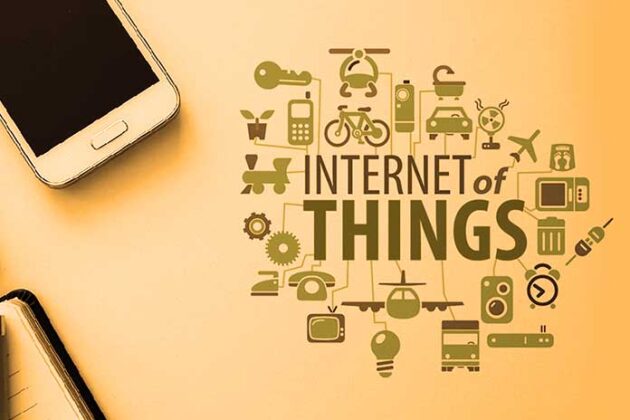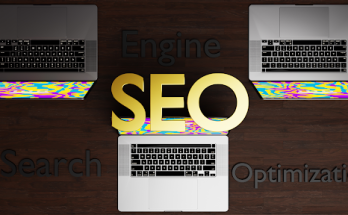When IoT is applied to marketing, it means that data from various IoT devices will be available for marketers to analyze real-time customer behavior. This will help marketers to optimize their marketing strategies. Besides, it will also help improve the lives of humans. It is an open-source project. Here are some ways you can use IoT for marketing. Read on! – 3 Ways To Use IoT in Marketing
Data gleaned from IoT devices helps marketers optimize their marketing strategies
Internet of Things devices can help brands and marketers track the preferences and habits of consumers. The information gathered by these devices can help brands and marketers target consumers and nudge them towards conversion. For example, if a consumer enters an electronics store with the intention to purchase speakers, they may be served ads related to those speakers or complementary items. This data helps digital marketers optimize their marketing strategies by determining the most relevant keywords and preparing a more effective acquisition strategy.
The Internet of Things is rapidly expanding. It encompasses anything and everything connected to the Internet. Most often, it refers to the devices that communicate with each other. But this category also includes almost every device that’s ubiquitous, such as watches. IoT devices have the potential to improve the way companies operate. A recent statistic estimates that the number of connected devices will reach 75 billion by 2025. That’s a five-fold increase in just ten years.
As IoT devices become more commonplace, marketers should make sure they learn as much about it as they can. Not only will it make marketing more effective, but it will also help them deliver personalized content to customers. In addition to this, it can supplement a sales team. The future of marketing is richer with IoT devices, and those who can adapt will stand out.
IoT applications provide insight into data generated by IoT devices. In addition to providing clean charts, these applications also allow marketers to integrate data from other applications. These tools also help marketers monitor their campaigns and create targeted marketing campaigns. IoT applications enable marketers to gain insights into customer behaviors. Personalized campaigns are a big part of creating a successful marketing strategy. Using this data to optimize the performance of their campaigns will ultimately increase their return on investment.
As IoT technology becomes more prevalent, marketers should be aware of the new privacy issues associated with IoT devices. They should consider whether their audience wants personalization. However, they should consider the fine line between relevant and intrusive information. IoT devices can help marketers create meaningful experiences for consumers through content marketing. A personalized experience is what audiences expect and will encourage them to engage with the brand.
It allows marketers to analyze customers’ behavior in real-time
With IoT, marketers can track customer behavior and generate insights in real time. Using RFIDs and WSNs, they can collect customer feedback and identify trends in product usage. Using this data, companies can improve CX by monitoring and analysing customer behaviour. For example, a Sydney cafe can recommend drinks based on a customer’s past purchases. Its IoT sensors can identify customer preferences to improve service and the overall experience.
IoT can help marketers better target their audiences by analyzing their behavior in real-time. As more devices are connected to the internet, the amount of data generated will increase. This information can be analyzed to determine the most appropriate marketing campaigns. In addition, marketers can optimize customer engagement and retention through this data. The IoT can also help marketers understand consumer behaviors to develop better products and interactions.
As IoT grows, it will make it possible for brands to create a closer relationship with their customers. With social media and cloud computing, consumers can now give their feedback instantly, so brands can adjust their products and services accordingly. Unlike in the past, marketers will no longer have to wait for a product to fail. With this data, they can cut their losses sooner than ever.
IoT appliances and IoT analytics will help marketers better understand and cater to the needs of customers. Among the best-known examples are the IoT devices and apps created by companies such as Walgreens and Google. The connected devices will help marketers understand their customers’ behavior and buying journey. IoT data will also help marketers create better products, enhance their experience and predict customer behavior.
Marketing has become a critical aspect of business, so it’s important to understand customer behavior and use it to your advantage. IoT allows marketers to analyze customer behavior in real time, and it can also help grocery store owners track their customers’ purchasing patterns. They can even send out promotional offers to customers based on their behaviors. If someone regularly purchases body care products, a store owner can send them promotional offers geared towards the body.
It improves the customer experience
When applied to marketing, IoT can significantly improve customer service and loyalty. Retailers, for example, can employ IoT with geofences and iBeacons to gain a deeper understanding of the path customers take within a physical location. The data collected by these devices can help brands develop better products and improve their existing offerings. As an added bonus, IoT can be used to track the health of products and identify parts in need of maintenance.
Using IoT for marketing, brands can implement a personalized approach to every single customer. The IoT system can analyze customer behavior and determine the most appropriate way to interact with each individual customer. A better relationship is created, and satisfied customers are more likely to recommend your brand to friends. Companies should consider IoT for marketing as a competitive edge. Customers should be able to enjoy a better experience than their competitors.
When applied to marketing, IoT helps businesses make smarter decisions and provide a better overall experience for consumers. For example, the data collected from sensors can help companies predict maintenance needs, improve products, and deliver personalized communications to enhance the customer experience. By implementing IoT in marketing, companies can increase sales and improve customer retention. A smart phone can even make a phone call or text to a customer.
Another example of how IoT can benefit companies is in the automotive industry. For instance, Tesla’s Model S has a continuous internet connection and can automatically transmit diagnostic information back to the manufacturer. This information can help them improve performance and safety. Already, some vehicles send data automatically to their manufacturers, and many others offer enhanced safety features and emergency response services. Other examples include Disney. There are endless benefits to using IoT for marketing, so take a look.
By making IoT available for marketers, businesses will be able to limit the negative marketing experiences that often plague the customer. Smart devices will allow companies to analyze the data gathered by sensors and automatically charge a customer’s account. They can also use this information to improve customer satisfaction surveys and build emotional connections with customers. IoT will enable marketers to reinvent the way they deliver products and services to customers.
It improves the quality of human lives
The IoT has many benefits for human beings. These devices can be energy-efficient and beneficial to the environment. Researchers are developing highly-efficient IoT devices that can monitor various health issues. Some of these applications are:
For example, IoT can improve worker safety by identifying hazardous conditions in the workplace. For example, sensors and wearable technologies can notify employees about hazardous conditions. They can also monitor patient health by monitoring their blood pressure and heartbeats remotely. Wearables with sensors can also inform physicians about a patient’s health status. And with smart technology, doctors can monitor patients’ medications from anywhere. This can save lives.
Another aspect of IoT that is gaining popularity is its security. As more devices become connected, privacy and security issues can emerge. As the number of connected devices increases, security measures must be in place to protect users. The development of an appropriate secure path is a major concern for IoT developers. However, the benefits of IoT can’t be overlooked as the field is growing rapidly.
Cities can use IoT to improve the quality of life. In the U.S., for example, cities can improve traffic flow and air quality by connecting smart sensors to cars and bicycles. They can even monitor pollution levels in real-time through a smartphone app. If you’re wondering whether the Internet of Things is a good idea for your city, the answer is yes! Let us explore how IoT can improve the quality of human life.
Smart homes are also very useful in the case of elderly people. They can monitor temperature, light, and water. They can also receive in-house medical care through software and devices. Moreover, cities are also becoming crowded. This calls for sustainable urban infrastructure. IoT development can help the city to cope with the growing demand. This will help in many ways, but IoT is also crucial in cities.
The Internet of Body devices can record bodily functions and location. The data collected from these devices will also enable people to make healthier choices, including a healthy diet. Many of these devices also use advanced sensors to monitor health data. The risks associated with the Internet of Bodies are discussed in a study from the RAND Foundation. In addition to improving the quality of human life, the Internet of Bodies can also have a negative impact on our privacy and security.



